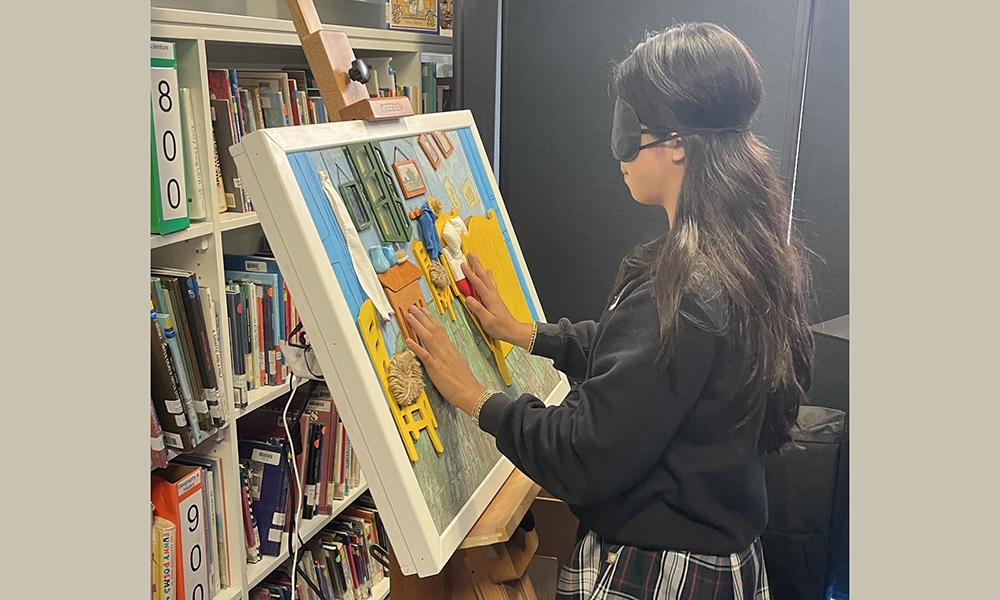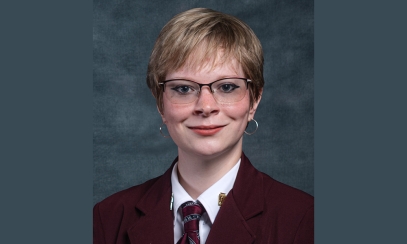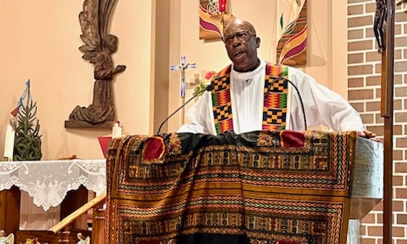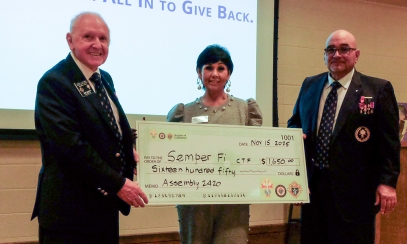
St. Francis Xavier students encounter artistic beauty in unique way
Students at St. Francis Xavier Catholic School in Birmingham had a unique opportunity to encounter the beauty of a renowned piece of fine art in a new way before concluding the 2024-2025 school year last month.
Father of two St. Francis Xavier students, Gianfranco Bianco is an assistant professor in the University of Alabama Birmingham’s (UAB) Department of Ophthalmology and Visual Sciences. His work lately has involved the Art and Innovation: Visions, Emotions, and Sensations (AIVES) project, which aims to help people who are blind experience visual artwork using texture and sound.
Bianco and his wife Elisa brought a piece of the AIVES project to the school library for students to experience firsthand.
Students wore blindfolds and listened to pre-recorded instructions while using their hands to explore a reconstructed version of Vincent van Gogh's “Bedroom in Arles.” The reconstructed painting included texturized features of items in the original painting, such as the chairs, the bedsheets, and the window.
After students experienced the painting blindfolded, they were then instructed to remove their blindfolds and see the reconstruction with their own eyes.
Students then completed a survey about their experience. According to the Biancos, the responses analyzed thus far have shown overwhelmingly positive results.
“It was very cool to get to experience something as if I were blind,” said Ana Echemendia, who just graduated from the 5th grade at St. Francis Xavier in May. “I felt like I was really ‘seeing’ the art, just with my fingers. It was different than anything I had done before."
“AIVES is an inclusive, multisensory installation that invites everyone, not just those with visual impairments, to experience art in a deeply emotional and tactile way,” explained Bianco. “By engaging all the senses, AIVES transforms the way individuals interact with artwork, encouraging independent exploration and fostering a more personal and profound connection with each piece. Our hope is that AIVES will open new doors for education, entertainment, and research, while promoting accessibility and inclusion in the arts.”



